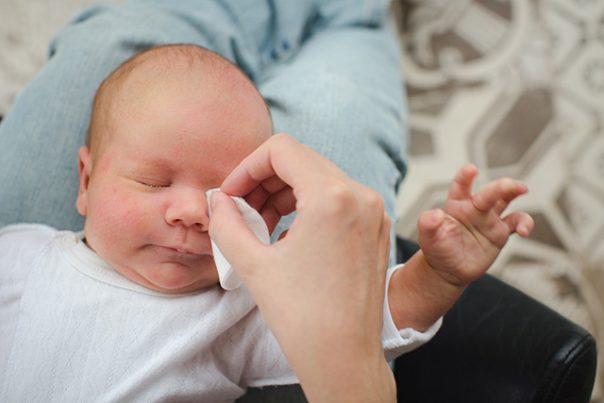
Neonatal conjunctivitis – causes, side effects and treatments at NaturalPedia.com
Thursday, May 24, 2018 by Michelle Simmons
http://www.naturalpedia.com/neonatal-conjunctivitis-causes-side-effects-and-treatments-at-naturalpedia-com.html

Neonatal conjunctivitis, also known as ophthalmia neonatorum, is watery or purulent ocular drainage caused by a chemical irritant or a pathogenic organism. It refers to any conjunctivitis occurring in the first 28 days after a baby was born. It is most commonly infective in origin. Less often, there can be viral causes. It is also a self-limiting condition that can last around 24 to 36 hours, but infections need treatment. Most cases of neonatal conjunctivitis is a mild illness. The only exception is when it is caused by gonococcal infection, which can progress quickly to corneal damage and permanent visual impairment. This may also cause systemic complications. As of April 2010, neonatal conjunctivitis is no longer a notifiable disease.

Known side effects of neonatal conjunctivitis
The known side effects of neonatal conjunctivitis include the following:
- Discharge of thick pus-like fluid from the eyes with the formation of crusts; or watery drainage from the eyes
- Tenderness, inflammation, and redness of the eye(s); this may occur in one eye and slowly progress to the other
The onset of side effects for bacteria-caused neonatal conjunctivitis may take occur anywhere within five days to two weeks. On the other hand, chemical irritant caused disorder may appear from day one, after contact with the chemical irritant.
Neonatal conjunctivitis can also lead to other health complications, such as corneal ulcer, scar, and perforation; bonding of eyelids to the eyeball; permanent eye damage or loss of vision; inflamed intraocular cavities; chronic recurrence of the condition; and increased risk for other complications like central nervous system problems, pneumonia, and septicemia.
Body systems harmed by neonatal conjunctivitis
The body systems harmed by neonatal conjunctivitis include the ocular and immune systems.
List of foods or nutrients that prevent neonatal conjunctivitis
There is no information on what foods or nutrients prevent neonatal conjunctivitis. However, there are foods that can help treat conjunctivitis. These include honey, aloe vera, basil leaves, chamomile, coriander, fennel, marigold, plantain, yogurt, and cucumber.
Treatments, management plans for neonatal conjunctivitis
Treatments for neonatal conjunctivitis depend on its cause. If chemical irritants cause it, there is no treatment needed. If a bacterial infection causes it, the baby may be hospitalized and treated. Treatments, in general, include systemic, topical, or combined antimicrobial therapy.
Where to learn more
- Vitamin D: The Body’s Essential Nutrient
- Hospital-Acquired Superbug Infections Soar in Newborn Babies
- Pink Eye: Facts, Symptoms And 6 Home Remedies To Cure It
- 8 Herbs that Help Improve Eyesight
- Newborn Procedures: Eye Ointment May Not Be Necessary
Summary
Neonatal conjunctivitis is watery or purulent ocular drainage caused by a chemical irritant or a pathogenic organism.
Neonatal conjunctivitis causes discharge of thick pus-like fluid from the eyes with the formation of crusts, watery drainage from the eyes, tenderness, inflammation, and redness of the eye/s).
Neonatal conjunctivitis can be treated with systemic, topical, or combined antimicrobial therapy.
Sources include:
Tagged Under: Tags: Neonatal conjunctivitis





